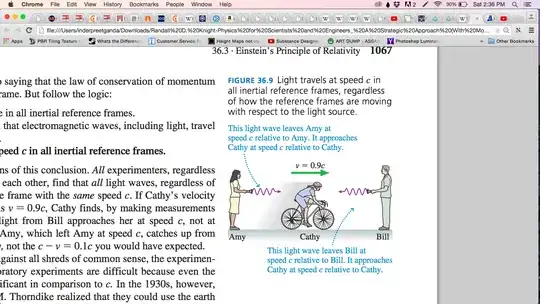That the speed of light is a fixed constant in all inertial reference frames is a consequence of Maxwell's equations of electromagnetism (assuming that two other standard constants, $\mu_0$ and $\epsilon_0$ are, in fact, non-zero constants).
The math goes like this:
Consider $\nabla\times B = \mu_0 J + \mu_0\epsilon_0\frac{\partial E}{\partial t}$. In a vacuum the current $J=0$, so defining a positive constant $c$ by $\mu_0\epsilon_0 = \frac{1}{c^2}$ we have that $$\nabla\times B= \frac{1}{c^2}\frac{\partial E}{\partial t}.$$
Taking the curl of this you get $$\frac{\partial}{\partial t} \nabla\times B = \frac{1}{c^2}\frac{\partial^2 E}{\partial t^2}.$$
We have the identity $\nabla\times\nabla\times E = \nabla(\nabla\cdot E)-\nabla^2 E$. By one of the Maxwell equations (assuming we are in a vacuum) we have $\nabla\cdot E = 0$. Therefore
$$\nabla\times\nabla\times E=-\frac{\partial}{\partial t}\nabla\times B=-\frac{1}{c^2}\frac{\partial^2 E}{\partial t^2} = -\nabla^2 E.$$
This is just a wave equation $\left(\nabla^2-\frac{1}{c^2}\frac{\partial^2}{\partial t^2}\right)E = \left( \nabla + \frac{1}{c} \frac{\partial}{\partial t}\right)\left(\nabla -\frac{1}{c} \frac{\partial}{\partial t}\right)E=0.$
Thus the propagation of the electromagnetic wave in a vacuum occurs at the finite speed $c$. This is independent of inertial reference frame, in particular.
This was originally kind of shocking, as this was definitely not what Newtonian mechanics had led them to expect. One of the proposed resolutions of this was that there was some yet unperceived ether which served as a universal reference frame, and it happened that Maxwell's equations took their simplest form in this frame, leading to the above calculations.
The Michelson-Morley experiment disproved the existence of the ether. It was Einstein who is credited with taking Maxwell's equations, and the derivation above in particular, at face value. That the speed of light was a fixed, finite constant in all inertial reference frames was the foundation of Special Realtivity.
In some sense, this shifts the question from "why is the speed of light constant and finite" to "why are those other two constants finite and non-zero, and why Maxwell's equations...etc.". As CuriousOne says in his comment, at some point this deviates away from science and into philosophy. That point is usually taken to be when we hit the mathematical foundation of what we're using. We have created mathematical models to explain observations, and these constants and Maxwell's equations are such models. There is no "why" to answer there other than "it's been working really well so far, so until the Universe starts doing something weird enough that we can see, we'll stick with it".
